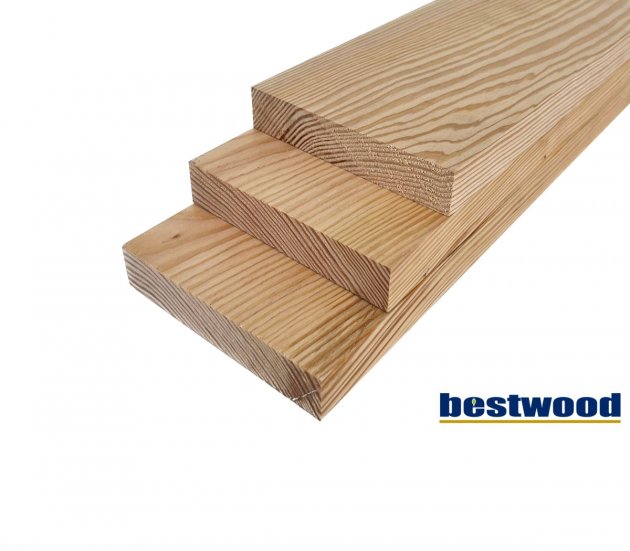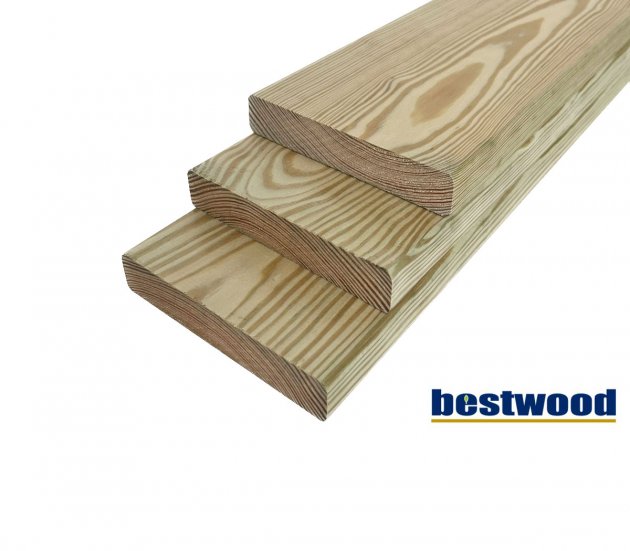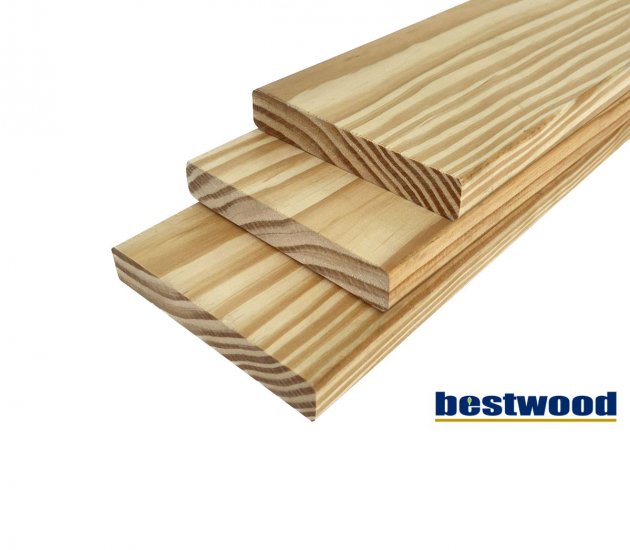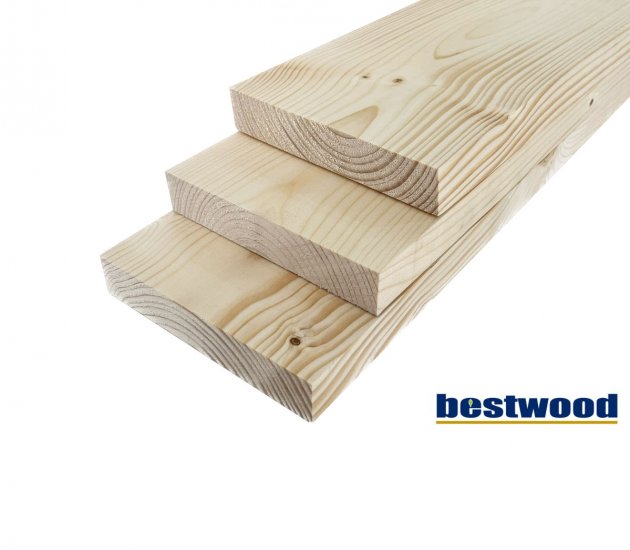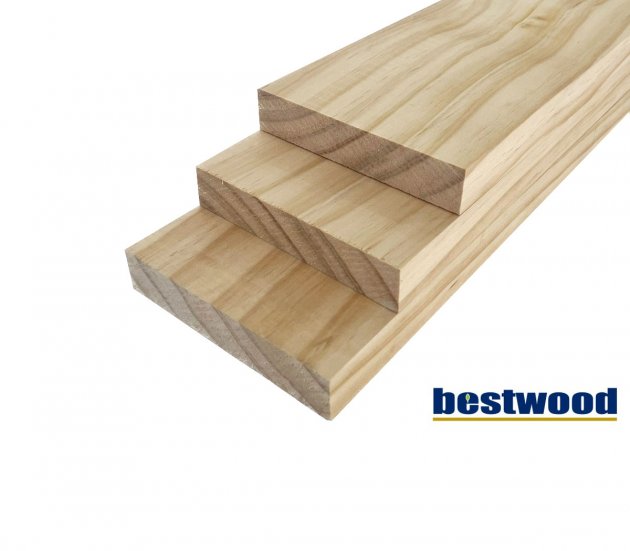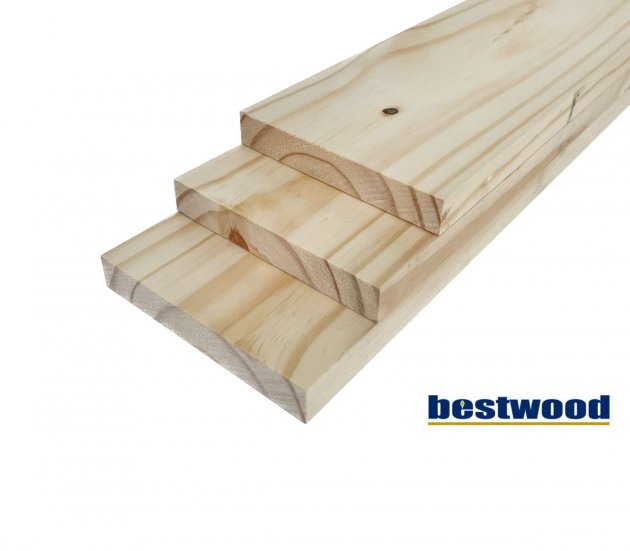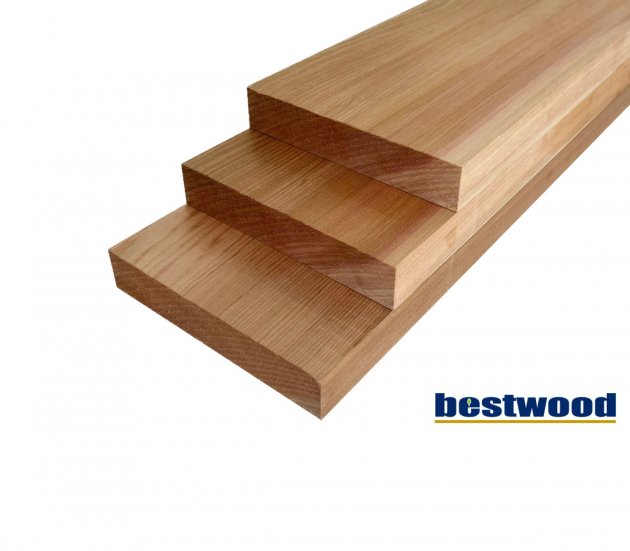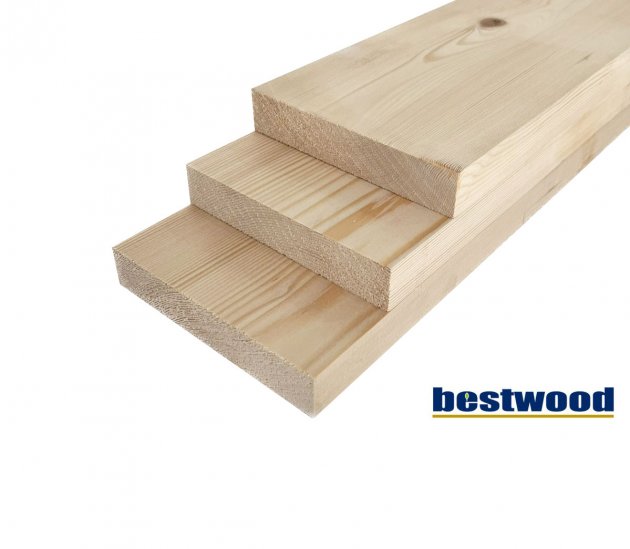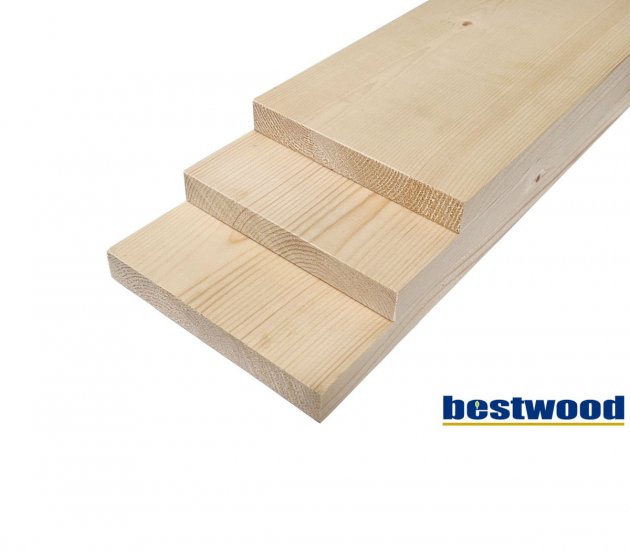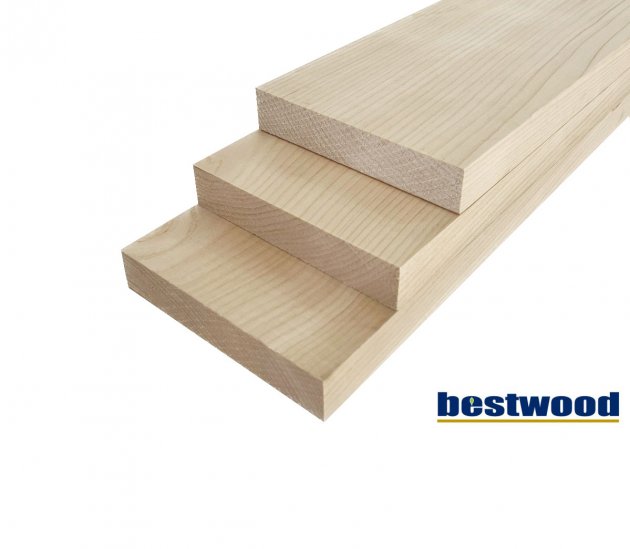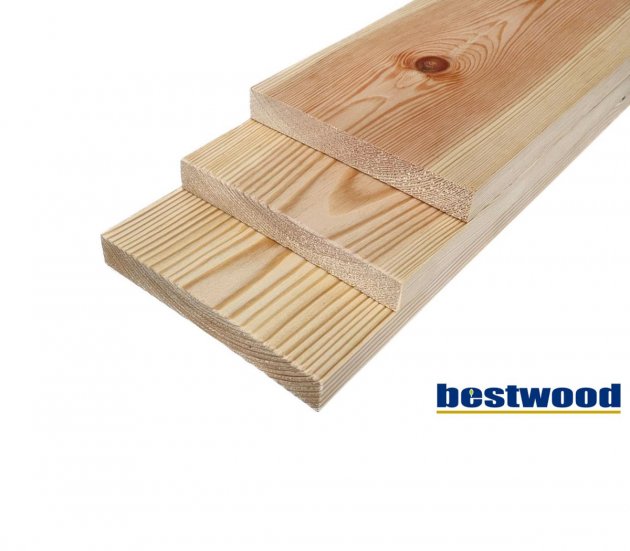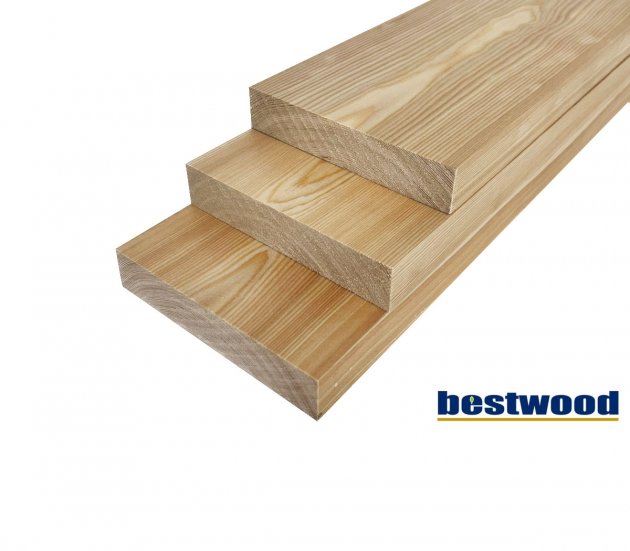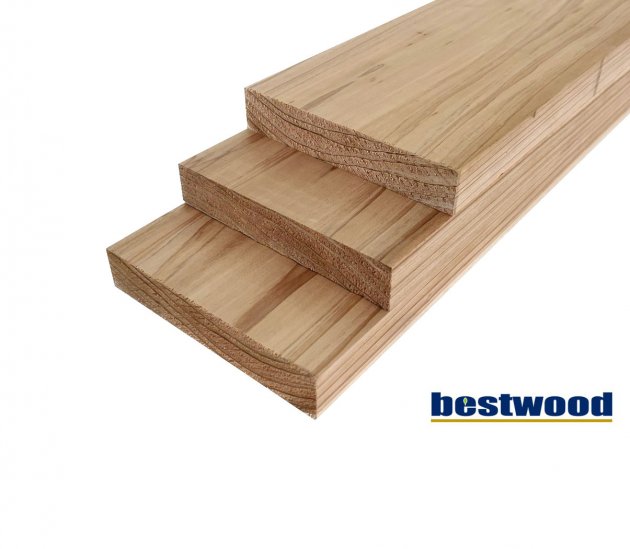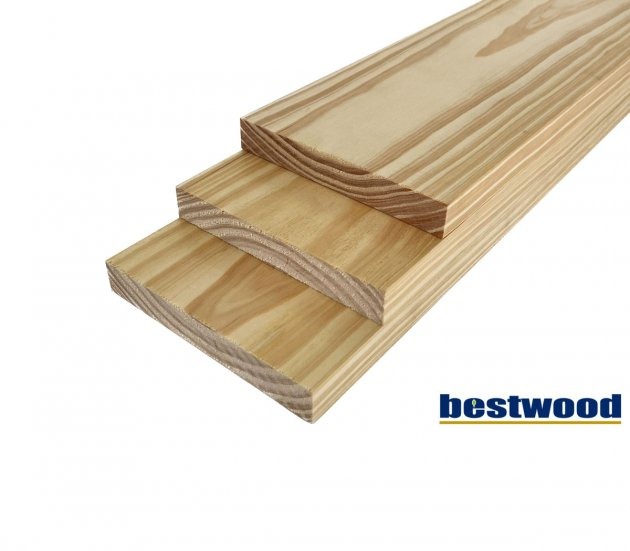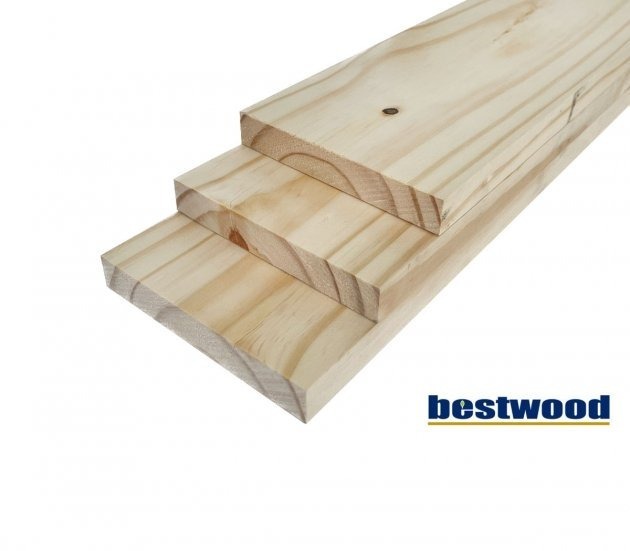Grade :C&BTR (Clear and Better) / NO.1 / NO.2 / UT&BTR
Surface Processing : Surfaced Four Sides (S4S)
Area : America
-
Douglas Fir, scientific name
Pseudotsuga menziesii, also known as North American Yellow Cedar or simply DF, is not a true fir species. It is native to North America, ranging from the Rocky Mountains to the Pacific coast, spanning from Mexico to British Columbia, Canada.
With a density ranging from 0.4 to 0.5, Douglas Fir exhibits a range of colors from pinkish-red to light yellow-white, with distinct differences in annual rings and grain patterns. Its wood grain varies from fine to slightly coarse, providing excellent machining results.
With a representative modulus of elasticity (MOE) reaching 134,000 MPa, Douglas Fir is suitable for both indoor and outdoor wood construction materials, being one of the strongest commercial softwoods structurally. It is also easy to dry, resistant to splitting, and offers excellent mechanical cutting results. It is suitable for various processed products and structural materials.
Adventage of bestwood
 圖片來源:https://www.pinterest.com/
圖片來源:https://www.pinterest.com/ -
Douglas Fir Specifications
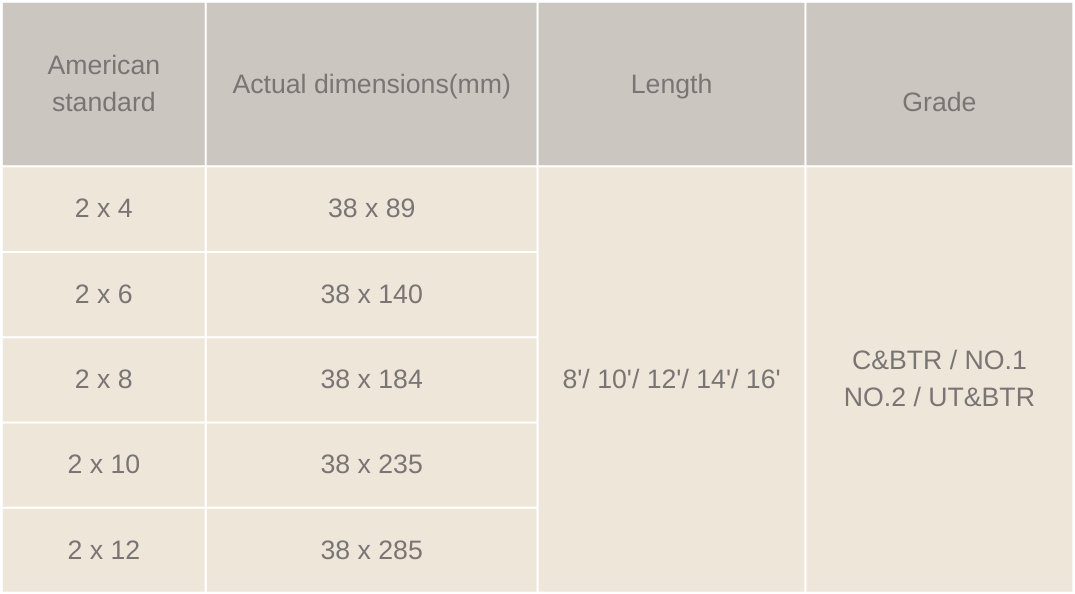
-
左右尚有資訊Wood Structural Building Materials
Douglas Fir is renowned for its excellent strength-to-weight ratio, with a higher density providing exceptional nail-holding capabilities. It is also one of the softwoods with a higher modulus of elasticity among North American conifers. Due to these physical properties, Douglas Fir is commonly used as structural materials in residential wood construction across North America.
Interior Decoration and Furniture Materials
With its attractive color, natural grain, and excellent woodworking characteristics, Douglas Fir has long been a preferred choice for interior decoration and household materials. Examples include interior finishing materials, structural materials, interior edge-glued wall panels, interior flooring, various types of solid wood furniture, window frames, door frames, and door panels.
Engineering Materials - Douglas Fir Glulam Beams
Due to its superior strength-to-weight ratio compared to steel, Douglas Fir is commonly selected as the material for engineered glulam beams. Graded Douglas Fir lumber is often bonded with weather-resistant phenol formaldehyde (PF) adhesive to customize various dimensional requirements. Compared to solid wood of the same specifications, glulam beams offer higher structural strength, providing architects and designers with more versatile design options.
Outdoor Preservative-Treated Wood
For various outdoor applications, Douglas Fir can be treated with different chemical preservatives, such as water-based ACQ, MCQ, or oil-based Hi-Clear preservatives, or creosote, to provide long-term durability under harsh natural weather conditions.
Common applications include large-span wooden bridges, highway sound barriers and guardrails, bay piers, and railway sleepers.
-
Douglas Fir Characteristic
Douglas Fir, scientific name
Pseudotsuga menziesii, also known as North American Yellow Cedar or simply DF, is not a true fir species. It is native to North America, ranging from the Rocky Mountains to the Pacific coast, spanning from Mexico to British Columbia, Canada.
With a density ranging from 0.4 to 0.5, Douglas Fir exhibits a range of colors from pinkish-red to light yellow-white, with distinct differences in annual rings and grain patterns. Its wood grain varies from fine to slightly coarse, providing excellent machining results.
With a representative modulus of elasticity (MOE) reaching 134,000 MPa, Douglas Fir is suitable for both indoor and outdoor wood construction materials, being one of the strongest commercial softwoods structurally. It is also easy to dry, resistant to splitting, and offers excellent mechanical cutting results. It is suitable for various processed products and structural materials.
Adventage of bestwood
 圖片來源:https://www.pinterest.com/
圖片來源:https://www.pinterest.com/ -
Douglas Fir SpecificationsDouglas Fir Specifications

-
Douglas Fir Applications左右尚有資訊Wood Structural Building Materials
Douglas Fir is renowned for its excellent strength-to-weight ratio, with a higher density providing exceptional nail-holding capabilities. It is also one of the softwoods with a higher modulus of elasticity among North American conifers. Due to these physical properties, Douglas Fir is commonly used as structural materials in residential wood construction across North America.
Interior Decoration and Furniture Materials
With its attractive color, natural grain, and excellent woodworking characteristics, Douglas Fir has long been a preferred choice for interior decoration and household materials. Examples include interior finishing materials, structural materials, interior edge-glued wall panels, interior flooring, various types of solid wood furniture, window frames, door frames, and door panels.
Engineering Materials - Douglas Fir Glulam Beams
Due to its superior strength-to-weight ratio compared to steel, Douglas Fir is commonly selected as the material for engineered glulam beams. Graded Douglas Fir lumber is often bonded with weather-resistant phenol formaldehyde (PF) adhesive to customize various dimensional requirements. Compared to solid wood of the same specifications, glulam beams offer higher structural strength, providing architects and designers with more versatile design options.
Outdoor Preservative-Treated Wood
For various outdoor applications, Douglas Fir can be treated with different chemical preservatives, such as water-based ACQ, MCQ, or oil-based Hi-Clear preservatives, or creosote, to provide long-term durability under harsh natural weather conditions.
Common applications include large-span wooden bridges, highway sound barriers and guardrails, bay piers, and railway sleepers.

